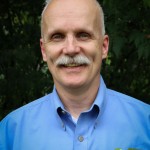Organics: Saving the Planet’s Bacon
A Look Back and a Glimpse Forward
More than a year ago a geeky and decidedly academic paper shed light on an important thought. “A Lifecycle Model to Evaluate Carbon Sequestration Potential and Greenhouse Gas Dynamics of Managed Grasslands” published by UC Berkeley (Delonge, Ryals, Silver, 2013) concluded that simply composting organic waste and tilling it into rangelands has a profound carbon sequestration effect. The Marin Carbon Project took this idea and is running all the way to the carbon bank – literally.
The research on compost’s power to sequester carbon led directly to the impressive report published this year by Brenda Platt of the Institute for Local Self Reliance and Nora Goldstein of BioCycle Magazine entitled “State of Composting 2014.” The same institution backed both efforts and together they lay out a path for saving the planet’s bacon through carbon sequestration.
Organics recovery has always had a problem. It’s hard to drive motivation for recovery with a strictly financial equation. The final product simply doesn’t pay for the required processing in many cases. But, carbon sequestration increases the value of compost substantially and it also promotes fertility and increases the value of the soil in other ways. So, perhaps carbon value unlocks the necessary additional value to encourage system growth.
Organics Activities in 2014
This year, some movement was made toward the proverbial bacon saving through organics recovery activities.
- Legislative – Mandatory organics collection legislation in MA, VT, CT and RI was passed, reversing the trend of previous years for overturning existing organics legislation. Bills in CA were signed to remove the credit for green waste as alternative daily cover (ADC) and required the collection of commercial organics.
- Financing – The Closed Loop Fund, as part of its mandate to provide loans to public and private waste recovery initiatives, will focus a substantial fraction of its $100 million fund on organics recovery projects.
- Municipal – NYC’s Local Law 146, passed in 2013, is now being implemented. It requires large food retailers, including chain restaurants, supermarkets and large-scale caterers, to separate food waste at their establishments. This activity has had a profound effect on the awareness of food waste recovery.
- Association – The US Composting Council continued to methodically build composting infrastructure. It orchestrated a five day training for 100 people in 2014, grew enrollment in the Soil Testing Seal of Approval to more than 260 facilities, and developed model labeling legislation on compostable plastics.
So, now what?
The hard work lies ahead. Our organics recovery infrastructure is underbuilt. Markets, even with rangeland tillage, require development. Entrepreneurs need training in best practices so they can build successful businesses. State and local regulations discourage facility development because we can’t agree whether organics recovery is a farm activity or an industrial operation. Reversing policy disincentives demands thoughtful lobbying and education of government leaders and policy makers. In short an industry needs to be quickly created in a way that enables our society to eliminate the landfill disposal of any organic material.
Fortunately a model for success already exists. Thirty years ago the recycling industry stood at a similar crossroads. True and apocryphal stories of warehouses full of recycled newspaper abounded. Pundits claimed “recycling will never work.” Slowly at first the industry began to accept, then embrace and finally demand recycled feedstock. The ship had turned, finally, and now can’t continue without a steady supply of recycled feedstock. That too can be the path for organics recovery. But instead of feeding our desire for more packaging, water bottles or beer cans, this path can fulfill our need for better and more abundant food. We are about to embark on a fabulous journey.
Where do you think 2015 will lead? Tell us in the comments section below.
